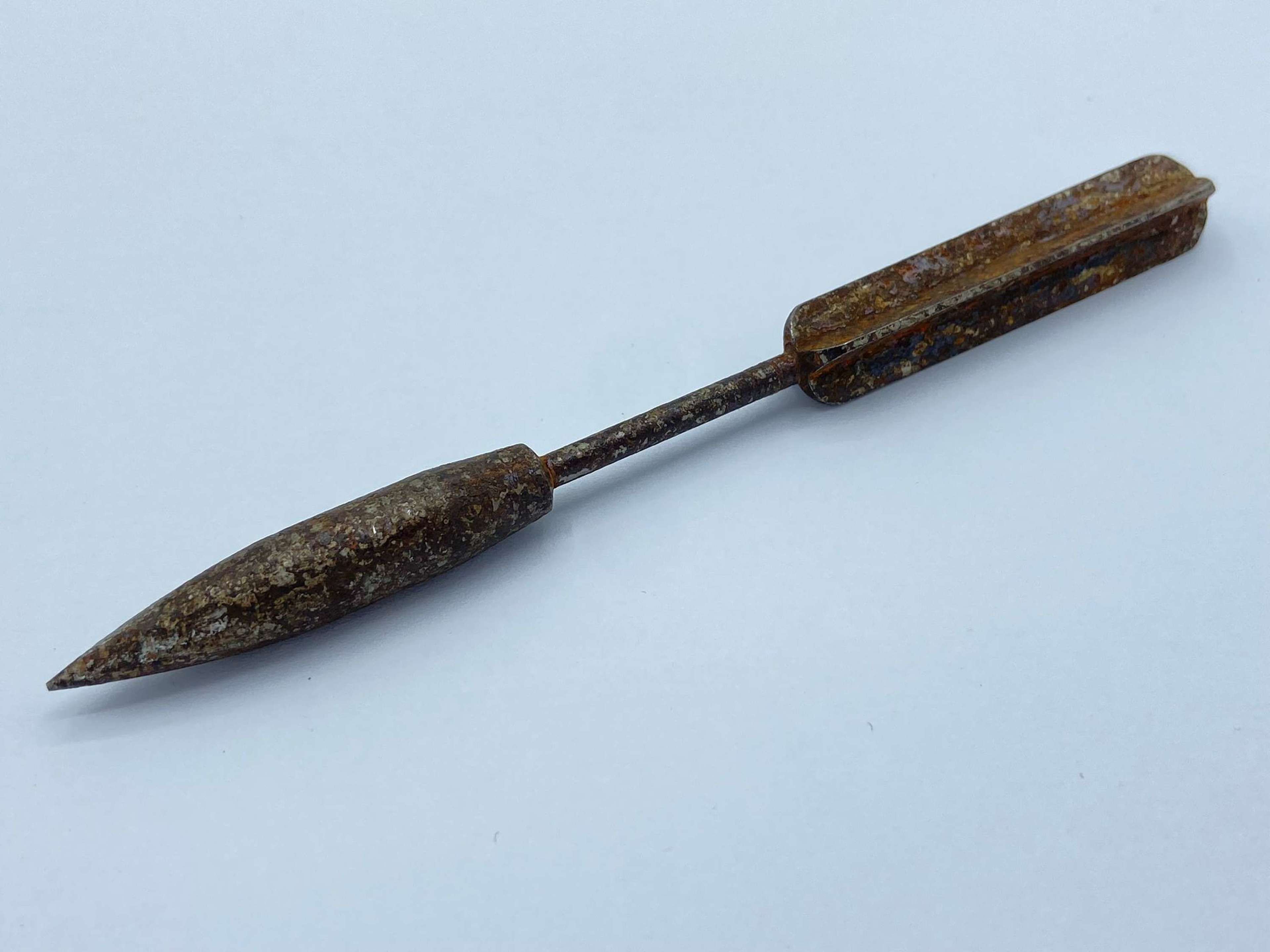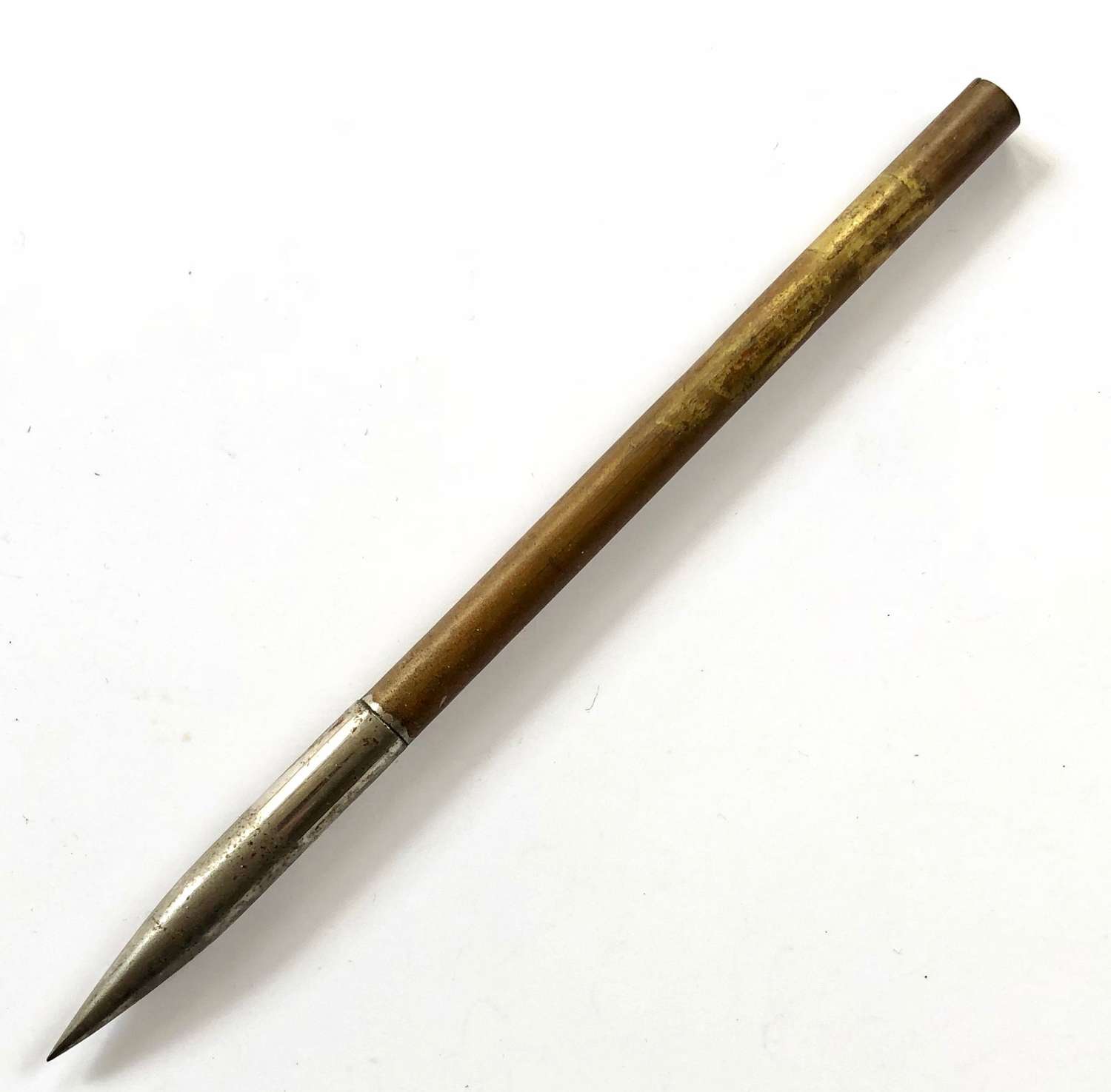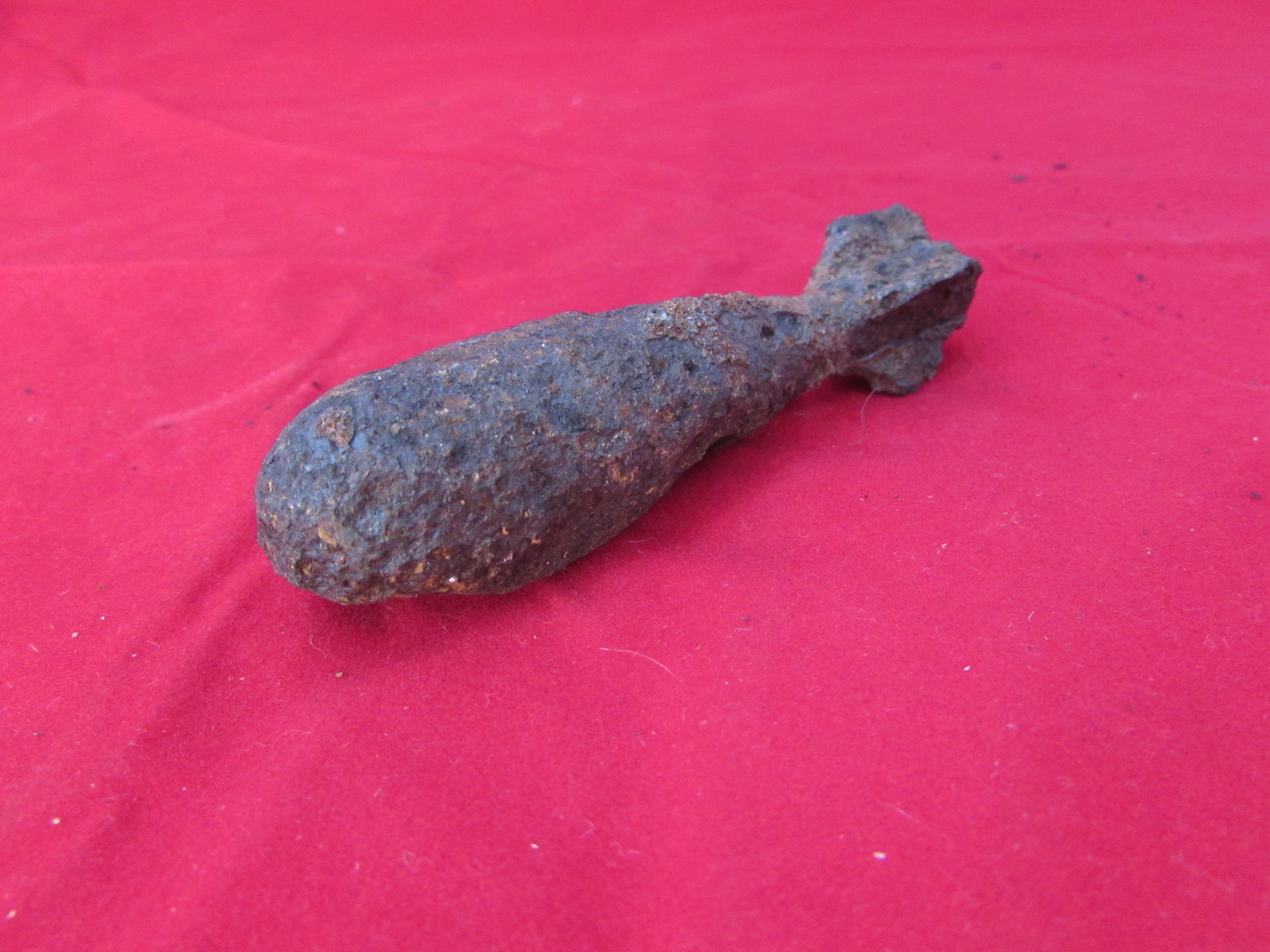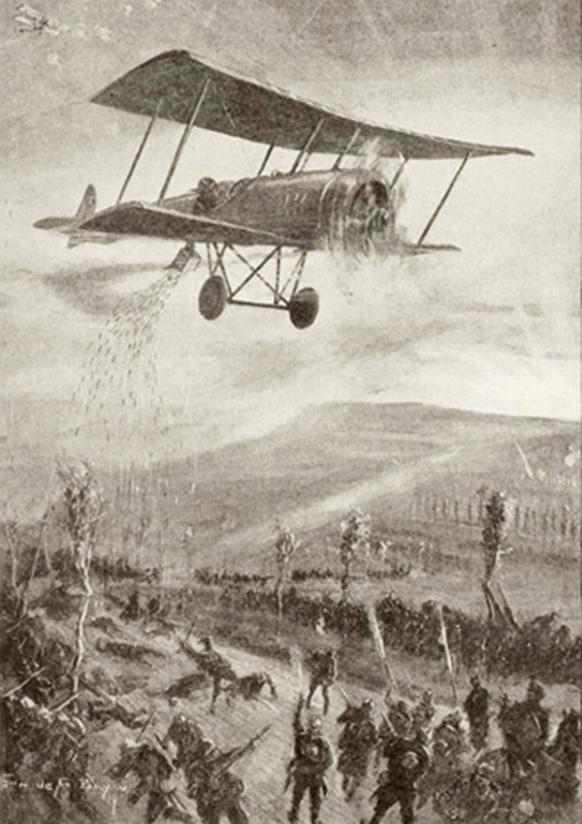
Rare WW1 Anti Zeppelin Aerial Dart spring loaded steel dart tip. Turned steel body. Rear steel ca
Home / Aerial Dart, Flechette, French, World War I. Steel WWI French dart dropped in bundles from aircraft. Cylidrical body with pointed tip and tapering to cruciform shape for final 2/3 of length. Eric Long 10/08/2015 Smithsonian National Air and Space Museum Aviation; World War I Usage conditions apply.

Original WWI Imperial German Flechette Aerial Darts Set of 4 International Military Antiques
Description WWI German Aerial Dart (Flechette) With History.A standard flechette of machined steel, measuring 4 ¾" overall. The dart is mounted to a cardboard backing 6 ¾" x 5", captioned by hand in ink: "Aerial arrow Austrian or German?Used in World War I 1915 to destroy cattle.

Three WW1 aerial Flechette darts. In World War I, these lethal darts were dropped from aircraft
World War I air dropped flechettes, probably French. The whole mechanism of deploying the flechettes was rather a simple technique; a small canister was attached to the bottom of the fuselage of the plane which was controlled via thin string.

WW1 RFC RNAS Incendiary Flechette Aerial Dart.
Flechette: Deadly Darts of War. Flechettes (French for: 'dart' or 'little arrow') were mass produced steel darts designed to be dropped from aircraft during the First World War with devastating effect before aerial bombs became more widely used. While based on medieval anti-siege weapons, the modern industrially produced flechette was.

flechette (aerial dart), German Imperial War Museums
Deadly Rain: Flechettes in WW1 Aerial Warfare Richard Hargreaves-Miller September 19, 2023 No Comments Flechettes were, steel dart-like projectiles that were dropped from aircraft over enemy lines. Drawing inspiration from medieval anti-siege tools, the contemporary flechette is believed to have been innovated by the Italians around 1910.

Original WWI Imperial German Flechette Aerial Darts Set of 4 International Military Antiques
It is either on loan or in storage. France ARMAMENT-Miscellaneous Steel WWI French dart dropped in bundles from aircraft. Cylidrical body with pointed tip and tapering to cruciform shape for final 2/3 of length. 3-D: 12.5 × 1 × 1cm (4 15/16 × 3/8 × 3/8 in.) Steel. A19910001000 National Air and Space Museum Usage conditions apply.

WW1 German Flechette Arial Dropped Dart 12.5cm In Length in Ammunition
Digging Deeper The Basics of a Flechette As mentioned above, this particular weapon is also known as an aerial dart or arrow; however, it is nothing close to those two things - it is not as flimsy as an arrow and is much stronger than a dart. The Flechette was developed by French investors in the Great War's early stages, in 1915.

Aerial WW1 flechete darts, three different patterns as dropped by aircraft over enemy troops in W
World War I air dropped flechettes, probably French During World War I, flechettes were dropped from aircraft to attack infantry and were able to pierce helmets. [2] [3] Two designs of the Lazy Dog bomb. (Top: early forged steel design; Bottom: later lathe-turned steel design)

WW1 RFC RNAS Incendiary Flechette Aerial Dart.
Physical description Flechette or Aerial Dart, similar in appearance to a metal pencil with sharpened end, suffering from some active rust. Label First World War flechettes were principally in use from 1914 through to the early part of 1916. They were dropped on troop and cavalry formations during the war History note

WWI FLECHETTE AERIAL DARTS USED BY BRITISH RFC AND GERMAN AIR FORCE Military antiques
AERIAL FLECHETTE - AIR DARTs By Guest Ian Bowbrick 1 April , 2003 in Air personnel and the war in the air Share 0 1 2 Next Page 1 of 2 Guest Ian Bowbrick Guests Posted 1 April , 2003 Does anyone know or has come across any text or statistics concerned with casualties caused by flechettes being dropped from aeroplanes?

WW1 German Aerial Darts most are marked with DRGM. Various shapes and sizes. Some rusting but ge
Flechettes, or aerial darts, are essentially short steel rods with a sharp point at one end, and fins at the other. Originally invented by the Italians in 1911-1912, during the First World War they were first said to have been used by the French in 1914, although they were also later used by the British and Germans.

WW1 Aerial Flechette/Dart in
Aerial warfare was by no means a First World War invention. Balloons had already been used for observation and propaganda distribution during the Napoleonic wars and the Franco-Prussian conflict of 1870-1871. Planes had been used for bombardment missions during the Italo-Turkish War of 1911-1912.

WW1 Flechette (aerial dart) Antiqurio Antiques
Colour Autochrome Lumière of a Nieuport Fighter in Aisne, France 1917. World War I was the first major conflict involving the large-scale use of aircraft.Tethered observation balloons had already been employed in several wars, and would be used extensively for artillery spotting. Germany employed Zeppelins for reconnaissance over the North Sea and Baltic and also for strategic bombing raids.

Flechette aerial darts 3x different types thrown from aeroplanes in the Great war onto trenches a
Join our community of drone experts! Location closest to you. DARTdrones is the nation's leader in drone training and consulting serving individuals, organizations and enterprise. 40+ cities, on-site and online.

That time pilots dropped terrifying darts out of their planes at the enemy
The Ranken Dart was an anti- Zeppelin weapon developed during the First World War. It was an air-dropped 1 lb (450 g) explosive flechette -type of missile-shaped bomb which was 13 inches (330 mm) long and 5.9 inches (150 mm) wide while being of a steel and wood construction. [1]

The Lanes Armoury A Very Good WW1 Aerial Flechette Dart
Description Shipping and Delivery WW1 Flechette or aerial dart found near Arras, France. The Flechette is a steel projectile with a vaned tail for stable flight. The name comes from the French Flechette, meaning arrow or dart. During WW1 many Flechettes were dropped from aircraft to attack infantry and were able3 to piece helmets.